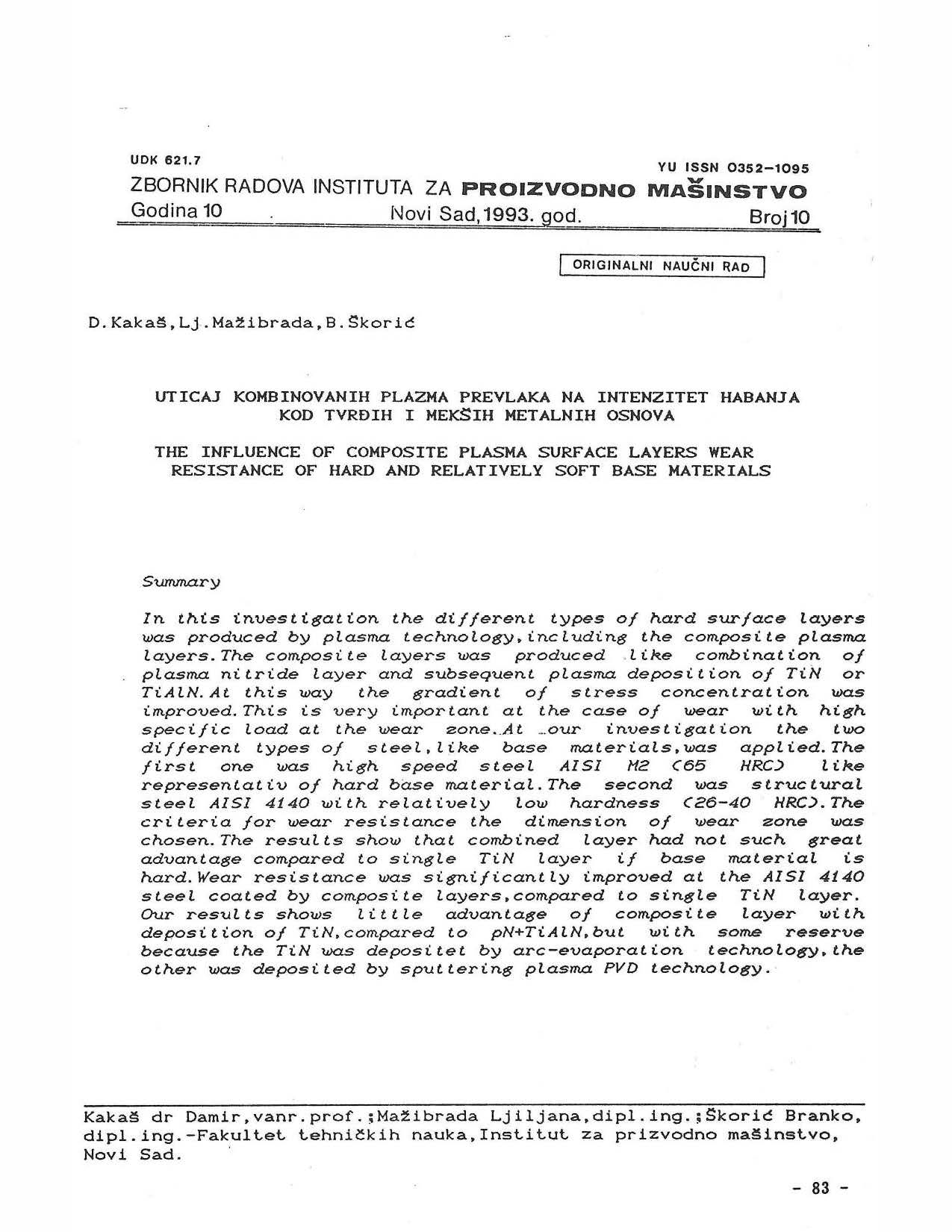The influence of composite plasma surface layers wear resistance of hard and relatively soft base materials

Published 1993-12-01
abstract views: 18 // FULL TEXT ARTICLE (PDF): 9
Keywords
- surface layers,
- plasma technology,
- composite plasma layers
How to Cite
Copyright (c) 2023 Journal of Production Engineering

This work is licensed under a Creative Commons Attribution 4.0 International License.
Abstract
In this investigation, different types of hard surface layers were produced using plasma technology, including composite plasma layers. The composite layers were created by combining a plasma nitride layer with subsequent plasma deposition of TiN or TiAlN. This approach improved the gradient of stress concentration, which is crucial when dealing with wear under high specific loads. In our investigation, two different types of steel-like base materials were applied. The first was high-speed steel AISI M2 (65 HRC), representing a hard base material. The second was structural steel AISI 4140 with relatively lower hardness (35-40 HRC). The criterion for assessing wear resistance was the dimension of the wear zone. The results indicate that the combined layer did not offer a significant advantage compared to a single TiN layer when the base material is hard. However, wear resistance was significantly enhanced for AISI 4140 steel coated with composite layers compared to a single TiN layer. Our results show a slight advantage of the composite layer with the deposition of TiN compared to PN+TiAlN, even though TiN was deposited using arc-evaporation technology and the other using sputtering plasma PVD technology.

